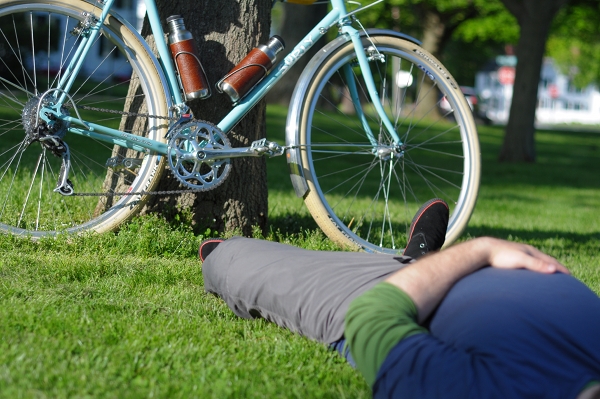For the past month I've been cycling about 120 miles per week, not counting transportation. And as someone who is completely new to the concept of "training" (i.e. cycling with the goal to become faster, better uphill, and so on) I've been struggling with how to structure my rides. Last year the very notion of structure would have seemed completely ridiculous: I would simply go off on my bike whenever I had the time. But last year I never cycled the way I do now, never exerted myself to such an extent repeatedly. Now everything is different, and I feel completely lost in this new territory.
One thing I've realised, is that if I do strenuous rides for more than two days in a row, on the third day my performance starts to get worse rather than better. Even if I don't think that I feel tired, it's as if my legs stop working properly. If you're an athlete, you are probably thinking "well, duh!" but to me this was a novel discovery. The idea of needing to rest and recover in order to improve did not have meaning until I physically experienced it.
What I am trying to figure out now is, what exactly does resting and recovering entail? Some advise that on days off, you absolutely must do "recovery rides" - 15-20 mile rides at an easy pace on fairly flat terrain - and that not doing them will result in stiff muscles and make it even more difficult to ride the next day. Others advise that on days off, you need to stay off the bicycle completely and just basically lounge around and eat so that your system can fully recover. Unless I am misinterpreting (which is entirely possible), these two points of view seem at odds with one another. So which is applicable under which circumstances?
Having tried both methods, I am still not sure which works better. I am also not sure whether transportation cycling (on an upright bike) is considered a type of recovery ride, or whether it's considered not cycling at all. Given that it activates a different set of muscles I suspect the latter, but I could be wrong. None of this stuff is intuitive for me, which makes it both frustrating and fascinating.
 23:43
23:43
 kaniamazdar
kaniamazdar


 Posted in:
Posted in: 













0 comments:
Post a Comment